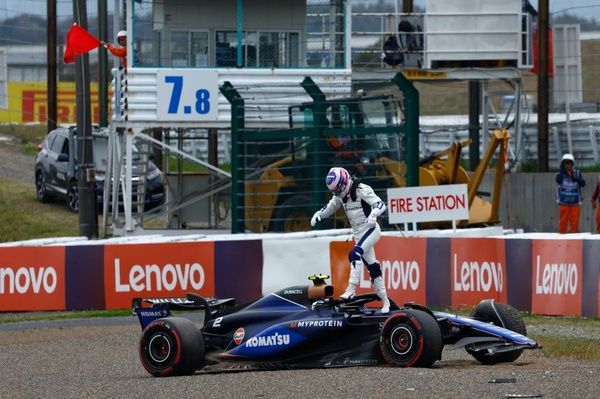Williams: Small gearbox key in FW33
Williams has revealed that creating the smallest gearbox in its Formula 1 history was one of the key factors that helped it create such a unique rear end to its new FW33

The Grove-based outfit has produced a very aggressive design at the back of its car - with the sidepods and engine cover narrowed down to the minimum to help airflow at the back of the car.
Williams technical director Sam Michael has said that the team has pushed so hard in this area because of the ban on double diffusers this year, which has put an emphasis back on getting as much performance as possible from the rear wing.
"The main target was to clear all the area to the rear lower wing because it is a performance differentiator now," he said during Valencia testing.
"You've got to have the underside of the rear lower wing completely free, so we took the decision to lift the top wishbone and the track rod and go to a Z-bone layout - which was commonly used in the early 90's - to get that all above the underside.
"It means that all the weight is in line with the trailing edge of the legality box, so you are nowhere near the underside of the rear lower wing, and it's completely free airflow."
Michael also believes that the push to get the airflow tidied up at the rear of the car meant that a pull-rod suspension configuration was a must.
"The pull rod was a no-brainer," he said. "It doesn't matter what you do with a pushrod, even if it is swept forwards or backwards, you've got a load going into the rear lower wing, whereas a pull rod is completely out of the rear lower wing. That was an easy decision.
"The other thing was to clear the centre of it by lowering the gearbox. We dropped the top section as much as we could and it is the smallest box we've ever made.
"We took that decision in March last year and we've done quite a few thousand kilometres on the dyno with that rear end. That was quite a big step on driveshaft angle, definitely the most extreme I've seen. The people we did the driveshaft design with had never done anything that extreme before. It was quite a big programme."
Michael was comfortable with the design concept his team had taken - and said the only surprise from the opposition so far was the sidepod exhaust system introduced by Renault.
"Everyone has really pushed little bits and pieces, whether it is lowering the final drive more like Red Bull or Renault have done, or getting a tighter 'Coke-bottle' rear end, or more elements on front wings.
"They are all the normal things that you are trying to do. The only different thing is the Renault blown exhaust out of the front, and the Toro Rosso double floor. We tested that [floor] a couple of times in the past and it didn't do anything for us, but Renault blowing out the front is interesting."
Be part of the Autosport community
Join the conversationShare Or Save This Story
Subscribe and access Autosport.com with your ad-blocker.
From Formula 1 to MotoGP we report straight from the paddock because we love our sport, just like you. In order to keep delivering our expert journalism, our website uses advertising. Still, we want to give you the opportunity to enjoy an ad-free and tracker-free website and to continue using your adblocker.



















Top Comments